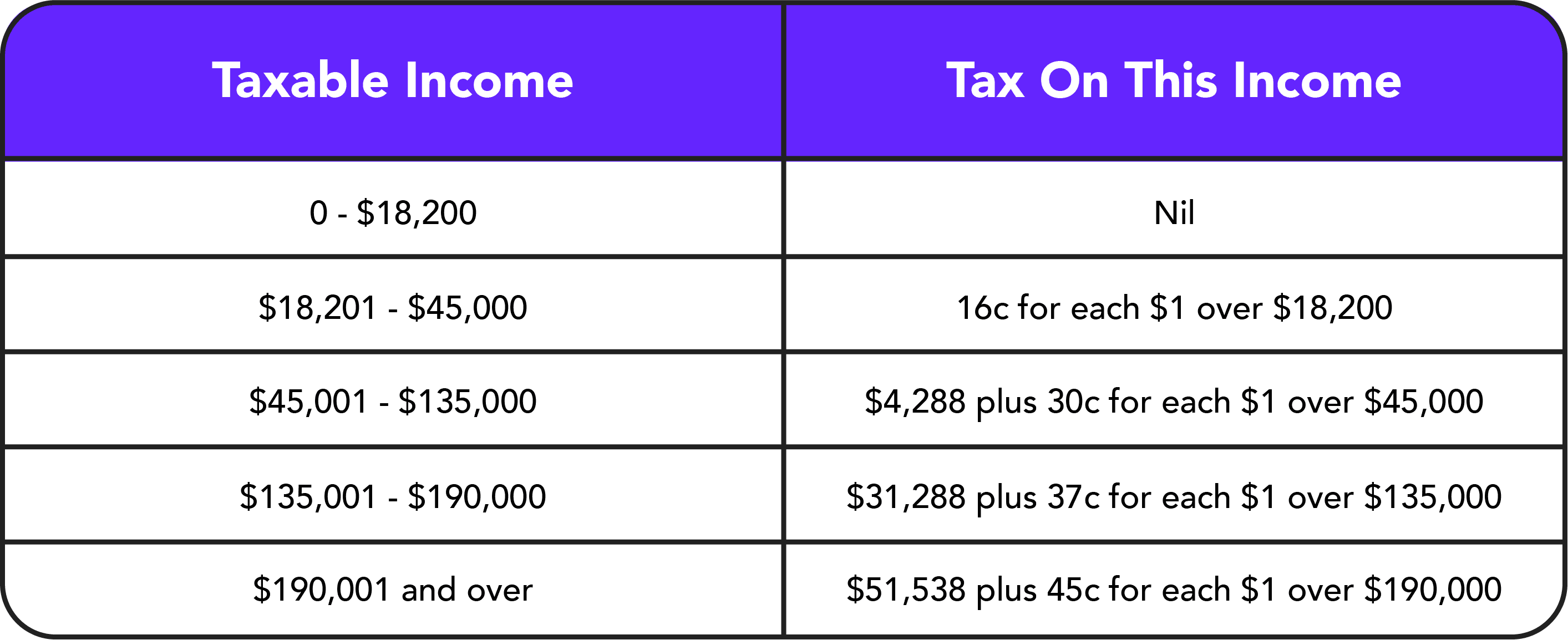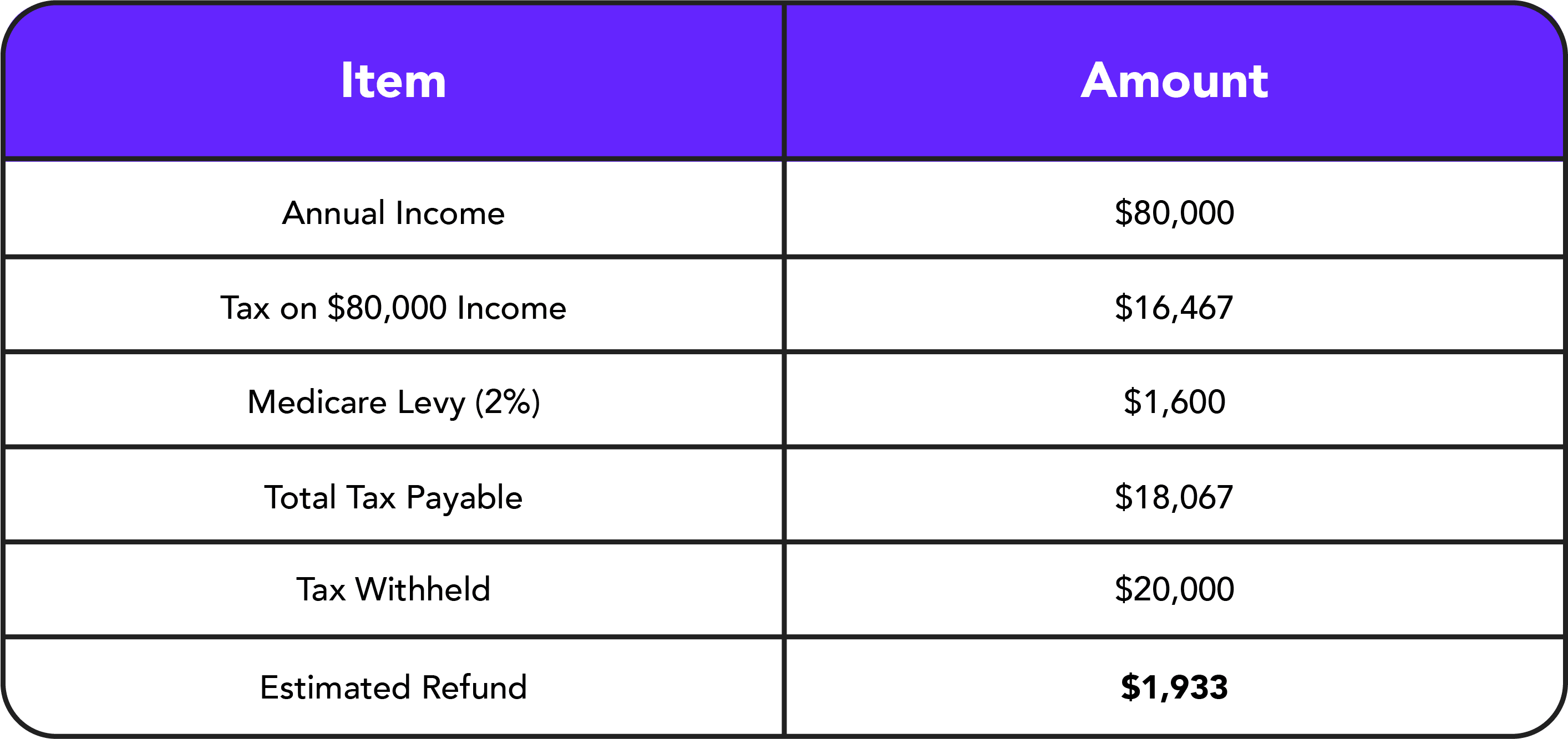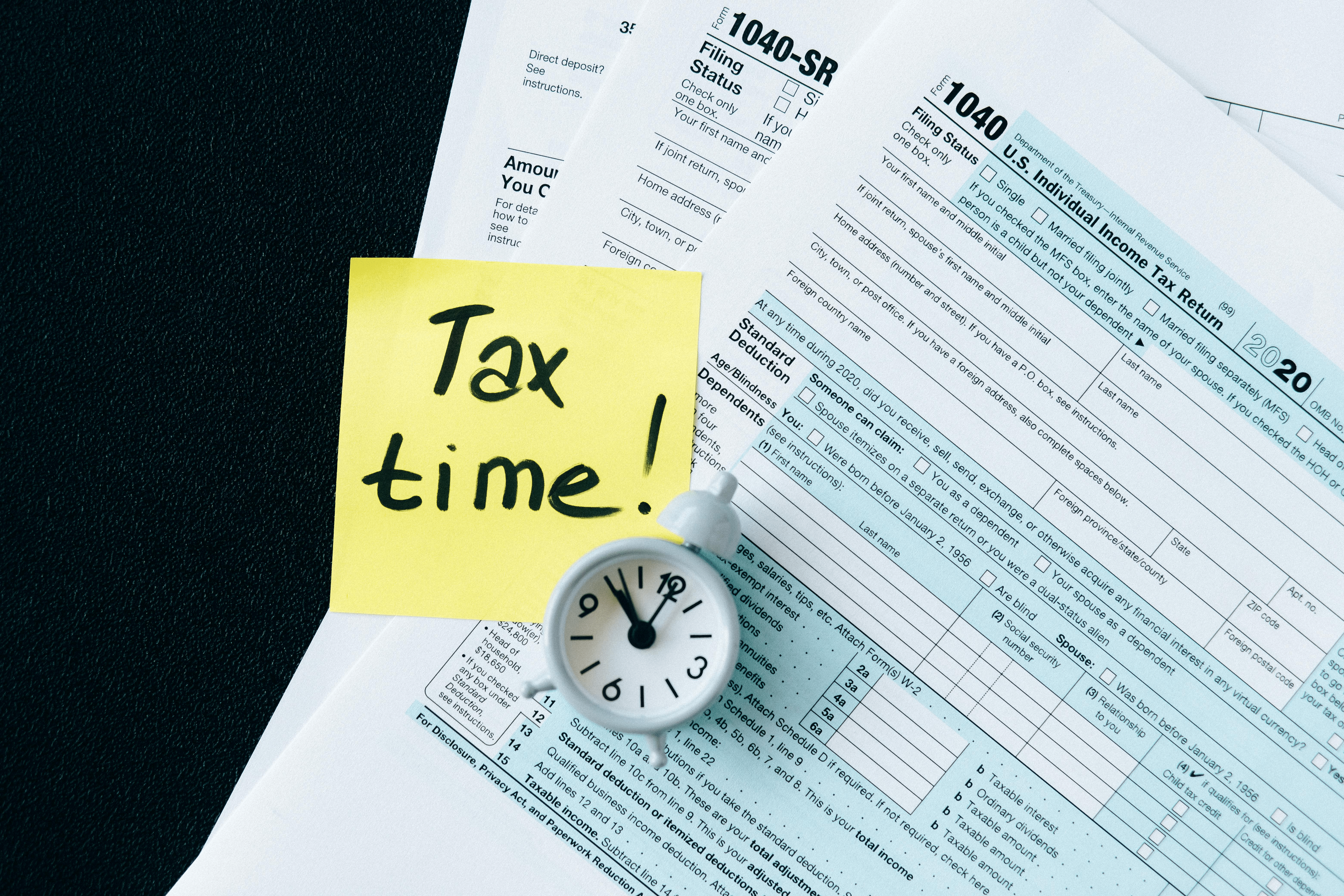April 17, 2025
How Much Tax Will I Get Back? A Complete Guide

Tax time can feel overwhelming for anyone. All those numbers, forms, and documents leave many Aussies wondering, “How much tax will I get back?” Understanding how tax refunds work and how to estimate your refund will help you get through the tax season with confidence. So, let’s begin!
What is a Tax Refund?
First, let’s learn what a tax refund actually is. Australia has a very progressive tax system in place. The income tax rates start at 0% for low-income earners and goes up to 45% for high-income earners. Below you can find a summary of the income tax rates in Australia.

When you lodge a tax return, the ATO calculates your actual tax obligation. If you have paid more taxes than you owe, you’ll get a refund. (Exciting, isn’t it?) If you’ve paid less, then you’ll have to cough up the difference.
Key Factors that Affect Your Tax Refund
Let’s look at several elements that play a key role in deciding the amount of tax you’ll get back. Try to keep accurate records of these.
- Taxable Income: This is what’s left after deducting allowable expenses from your assessable income. Your salary, wages, and other sources of income like interests, dividends, and rental income fall under this.
- Tax Withheld: Your employer withholds a part of your income through the financial year. The purpose of this is to cover your expected tax liability. This is known as the tax withheld.
- Deductions: These are the expenses that you can claim to reduce your taxable income. Most deductions directly relate to earning your income. But a few, such as Gifts and Donations, aren’t.
- Offsets: A tax offset (also known as a tax rebate) reduces the amount of tax you owe and boosts your refund. The tax offsets you are entitled to depend on your taxable income and the amount of tax you must pay. Most of the offsets are non-refundable.
- Medicare Levy: Most Aussies pay a 2% Medicare Levy. Some may even pay an additional surcharge if they don’t have private health insurance.
Estimating Your Tax Refund
To make it easier for you, you can try out the ATO Income Tax Calculator. This will help you get an accurate estimation of your tax return. It’s a handy tool that takes the guesswork out of the process. In addition to your taxable income, the income tax calculator considers the Medicare levy surcharge, tax offsets, and a number of loans including Income Contingent Loan (ICL) repayments.
For example, if your taxable income was $80,000, and you paid $20,000 in tax, your estimated refund would be:

If you simply want to calculate your based only on your taxable income, then you can use the Simple Tax Calculator.
Common Deductions to Maximise Your Refund
To boost your refund to the max, make sure you claim all eligible deductions. A lot of taxpayers miss out on money they’re entitled to mainly due to 2 reasons.
Firstly, they don’t keep enough accurate records. Secondly, they aren’t aware of what’s claimable and what’s not. Let’s look at some common deductions that may help you increase your refund.
#1 Vehicle and Travel Expenses
If you use your car for work-related travel, you can claim deductions for several occasions. This doesn’t include your usual commute from home to work.
These include travel between work sites and client meetings, traveling for trainings, seminars, and conferences. It also includes the cost of fuel, servicing, and depreciation if using the logbook method. If using the cents-per-kilometre method, a set rate per kilometre is considered. The rate for 2023-24 is 85 cents per kilometre.
#2 Clothing, Laundry, and Dry-Cleaning Expenses
You can claim deductions for several types of clothing. These include protective clothing such as steel-capped boots, high-visibility vests, and gloves, work uniforms with the company logo, job-specific clothing such as chef’s jackets, medical scrubs, etc. The ATO allows an estimate of $1 per load for work-only laundry or 50 cents per mixed load. Make sure you keep records if your total claim exceeds $150.
#3 Home Office Expenses
If you work from home (even part-time), you can claim several expenses. These include electricity and internet costs related to work, phone and computer usage related to work, etc. You can also claim tax deductions on costs for office furniture, stationery, printer ink, software subscriptions, etc.
In the Fixed Rate Method, the ATO allows a fixed rate of 67 cents per hour for home office expenses. This covers electricity, internet, and phone usage. To claim this deduction, make sure to keep a record of your work hours.
#4 Self-Education and Professional Development
If you attend courses or training that are directly related to your job, there are a few expenses that you can claim. These include course fees (excluding HELP/HECS repayments), study materials (like textbooks and stationery), training and upskilling workshops related to work, and study-related internet and phone costs. Here, the courses considered must improve or maintain the skills needed for your current role, not for a new career path.
These are some of the common deductions you can claim. If you want to learn more, visit the ATO’s guide on claiming deductions for a comprehensive list of deductions and eligibility requirements.
Tax Offsets
Tax offsets directly reduce the amount of tax you owe. Some common offsets are the Low and Middle-Income Tax Offset (LMITO) and the Private Health Insurance Rebate. LMITO is available to individuals earning under a certain threshold. If you have private health cover, you might be eligible for a rebate.

Lodging Your Tax Return
Based on what you like and your tax situations, there are several lodgement options you can choose from. Filing online using myGov is the most common method. Here, you may connect your account to the ATO and electronically file your tax return.
If your tax situation is more complicated, using a registered tax agent is the best option. However, they charge a fee for their services, which is tax deductible. Paper tax returns are still an option for those who would like to go the old-fashioned way.
If you file your tax return easily, consider using Lodge Pro, an automated tax software made to simplify tax filing. It ensures accurate, convenient, and transparent tax filing. With Lodge Pro, you can easily link your bank accounts using open banking and accurately classify your deductions using AI-powered tools. Learn more about Lodge Pro here.
Remember These Dates
To avoid penalties, keeping track of important dates is essential. Australia’s financial year starts on July 1 and ends on June 30. If you’re filing your tax return on paper or through myGov, the deadline is October 31. It’s best to file as soon as possible because missing the deadline may result in penalties.
If you decide to file through a licenced tax agent, they may have different extended deadlines. However, to be eligible for an extension, you must be registered with an agent by October 31. Don’t forget to mark these dates on your calendar for a stress-free tax time.
Recent Tax Changes and Updates
It’s important to know any updates that can affect your tax return. For instance, many Australians have benefited from recent tax cuts. A recent report estimates that the average Australian worker will receive a tax cut of $1,888 this year, increasing to $1,944 in 2025–2026. Tax breaks of up to $4,500 per year could be available to high-income taxpayers. These changes will lead to an improvement in wage growth and economic benefits for the public.
Even though tax time may feel intimidating, you can confidently tackle the tax season with the information highlighted here. To get a clear picture of your tax refund, you can use tools like ATO’s income tax estimator, maintain correct records, and keep track of all eligible deductions and offsets when filing your tax return. If you have doubts, don’t hesitate to seek out expert help. Happy tax time, mates!

